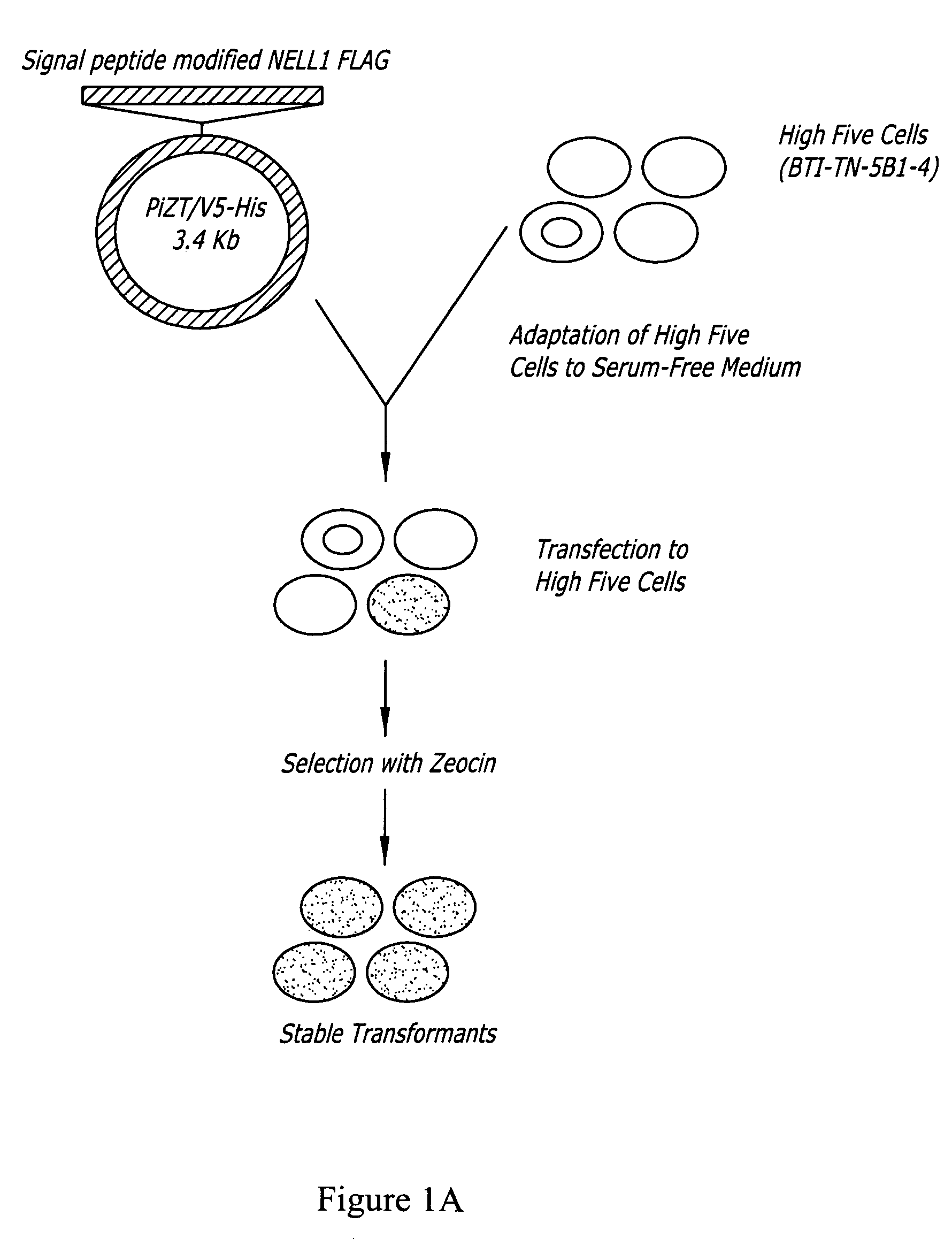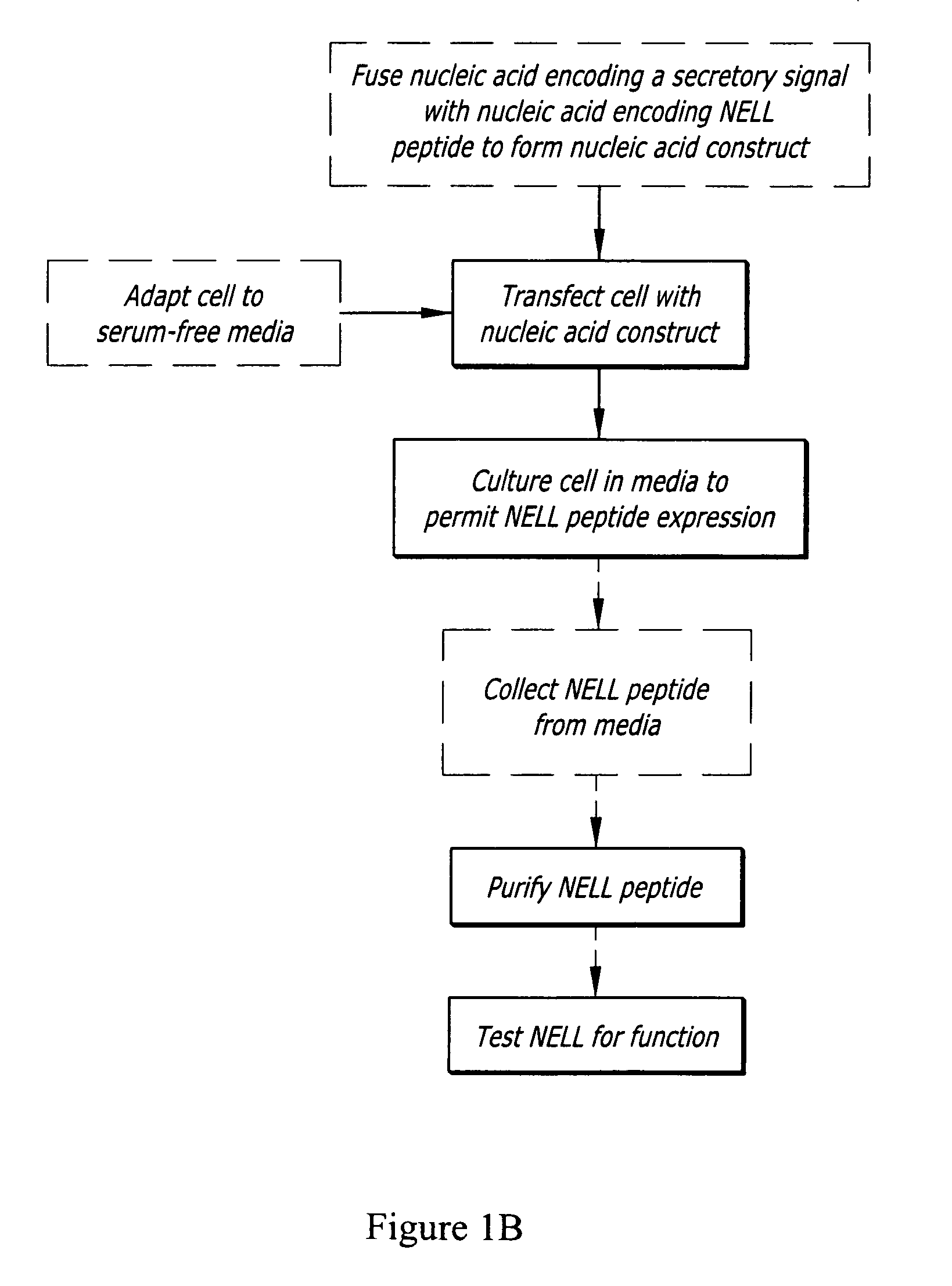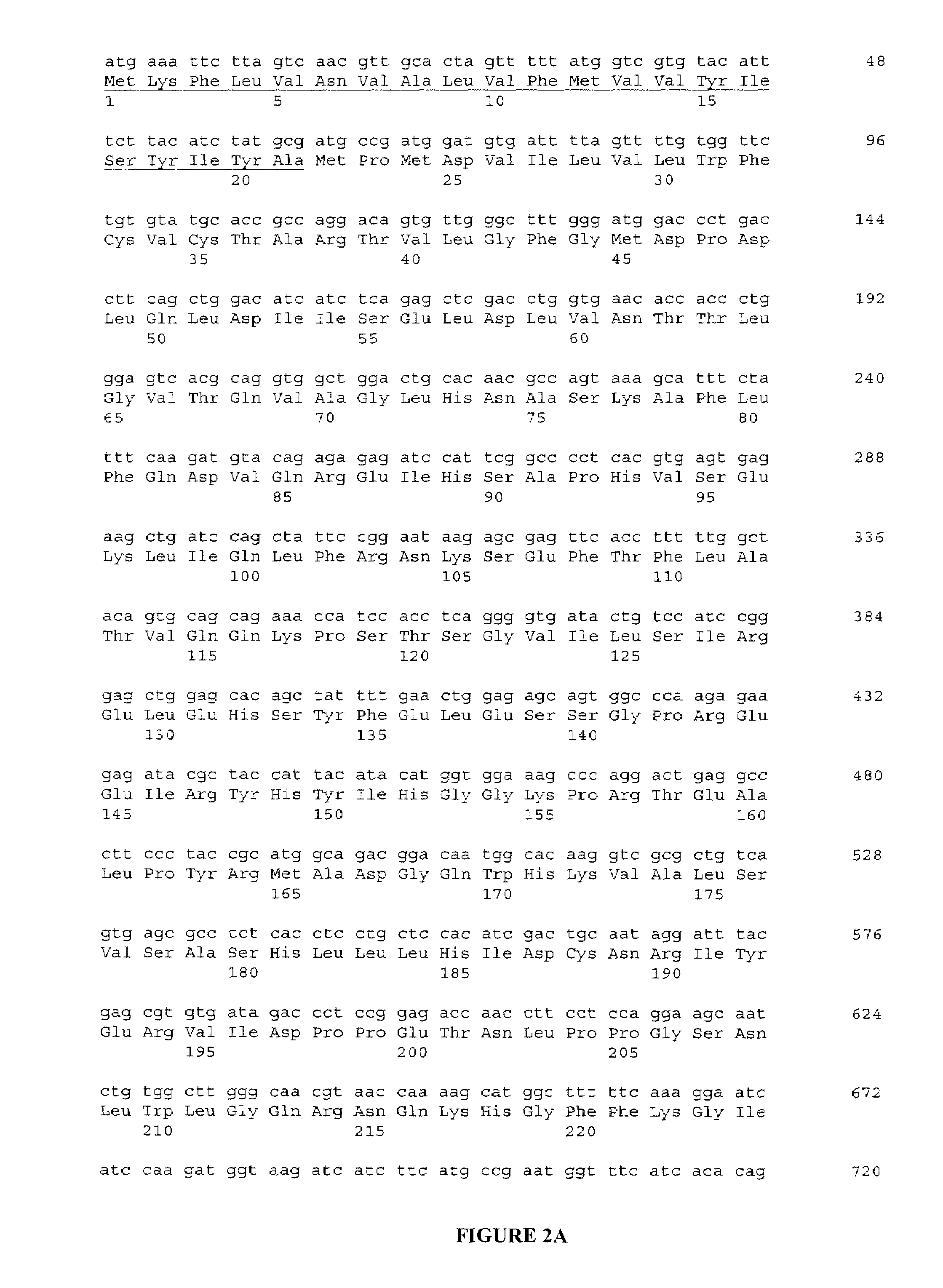Expression system of NELL peptide
a technology of nell peptide and expression system, which is applied in the direction of peptides, drug compositions, dna/rna fragmentation, etc., can solve the problems of limiting clinical use, cranial dimorphism, and limited volume of donor sites, and achieves enhanced osteogenic differentiation, osteoblastic mineralization and bone formation, and enhanced osteogenic differentiation.
- Summary
- Abstract
- Description
- Claims
- Application Information
AI Technical Summary
Benefits of technology
Problems solved by technology
Method used
Image
Examples
example 1
Expression of Nell Peptides
[0089]A cDNA fragment was ligated into the expression vector PiZT / V5-His (3.4 kb) (EcoRV site, Invitrogen) and included a melittin signal peptide, BamHI-EcoRI cDNA fragment of the mature rat NELL1 and a FLAG tag sequence. FIGS. 2A-2B are a depiction of the nucleic acid sequence of the cDNA construct used in this example, and corresponding predicted peptide sequence.
[0090]The High five cells (BTI-TN-5B1-4) were adapted to serum-free medium, and cells were transfected with the NELL1 peptide expression vector. Cells were treated with zeocin so as to select only cell populations expressing the NELL1 FLAG constructs. Surviving cell populations were confirmed to be stable transformants. Extracellular media was collected and tested for the presence of NELL1 peptide. NELL1 peptide was purified and used in functional assays described below.
[0091]FIG. 2A is an illustration of a CBB-stained SDS-PAGE gel of UnoQ-eluate containing purified NELL1 peptide. The medium was...
example 2
Expression of NELL1 in Mammalian Systems
[0099]The mammalian expression system used for production of rhNELL1 by non-viral DNA delivery in this invention may include, but not limit to these commonly used stable suspension systems listed in Table 1. The relatively detailed protocols including vector design, host cell line culture, transfection and selection of stable cell line as well as purification of rhNell-1 in HEK 293 and CHO system are described below, but are well known to those in the art.
[0100]
TABLE 1Mammalian Expression System for production of rhNell-1ParentalLeaderGeneSystemvectorsequenceamplificationCHOp3Xflag-CMVpreprotrypsinNo / optinalDXB11mp19-Lphuman tPADHFR / MTXHEK293pSecTagimmunoglobulinNo / optinalNS / 0 or Sp2 / 0pdCs-Fc-Xlight chain of IgDHFR / MTXand Fc fragmentpEE12N / AGS / MSXDHFR: diydrofolate reductase;MTX: methotrxate;GS: glutamine synthetaseMSX: methionine sulphoximine
[0101]A. CHO System #1
[0102]Vector design: A cDNA fragment was ligated into the expression vector p3XF...
example 3
Purification of Nell2 Protein from Culture Medium
[0121]High Five cells carrying pIZT-FLC-NELL2 were cultured for about three days in serum free culture medium (1 L). The culture medium was centrifuged at. 3000×g for 5 minutes and the supernatant was collected. PMSF was added to a final concentration of 1 mM. Saturated ammonium sulfate solution (80% saturation (v / v) was added and the solution kept at 4 degrees for 1 hour. The solution was centrifuged at 15000×g for 30 min. and precipitate collected. Precipitate was dissolved in 50 ml of 20 mM Tris-HC1 (pH 8.0), 1 mm EDTA at 4 degree and applied onto an anion-exchange chromatography UnoQ column (6 ml, Bio-Rad) equilibrated in 20 mM Tris-HCl (pH 8.0), 1 mM EDTA at 4 degree (1 ml / min speed by FPLC (Amersham-Pharmacia). The column was thoroughly washed with the same buffer.
[0122]The binding protein was then eluted by the gradation from 0 M to 1.5 M NaCl in the same buffer. The NELL2-FLAG fractions were identified by Western blotting usin...
PUM
| Property | Measurement | Unit |
|---|---|---|
| pH | aaaaa | aaaaa |
| (v/v | aaaaa | aaaaa |
| pH | aaaaa | aaaaa |
Abstract
Description
Claims
Application Information
 Login to View More
Login to View More - R&D
- Intellectual Property
- Life Sciences
- Materials
- Tech Scout
- Unparalleled Data Quality
- Higher Quality Content
- 60% Fewer Hallucinations
Browse by: Latest US Patents, China's latest patents, Technical Efficacy Thesaurus, Application Domain, Technology Topic, Popular Technical Reports.
© 2025 PatSnap. All rights reserved.Legal|Privacy policy|Modern Slavery Act Transparency Statement|Sitemap|About US| Contact US: help@patsnap.com



